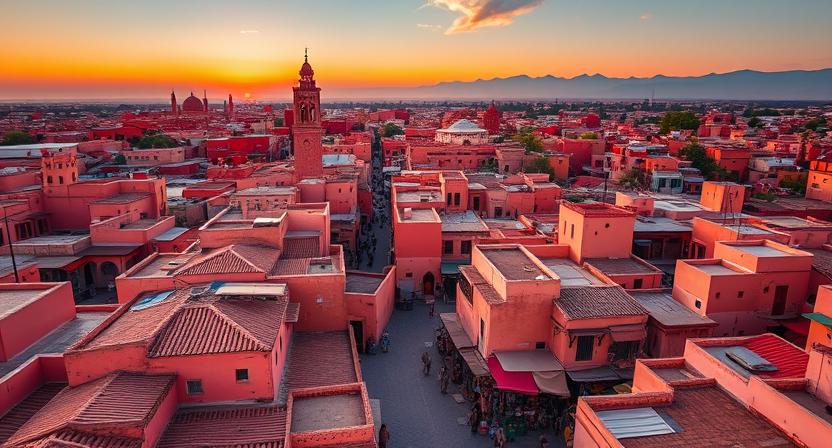Cities of Marrakech: Explore the Hidden Charms 2025
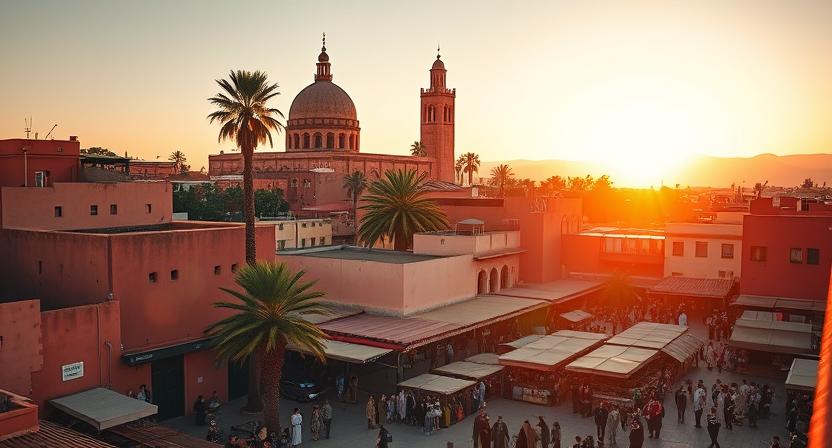
Cities of Marrakech
is not just a city — it’s a living, breathing mosaic of stories, traditions, and vibrant neighborhoods. Often referred to as the “Red City” because of its iconic terracotta buildings, the cities of Marrakech offer a journey through ancient medinas, modern quarters, serene gardens, and bustling souks. Whether you’re wandering through centuries-old alleyways or sipping mint tea on a rooftop terrace, Marrakech enchants every traveler who steps into its realm.
In this article, we’ll explore the many “cities within the city” — from the historical medina to the contemporary quarters — that make up the soul of cities of Marrakech
Gueliz: The French-Inspired Modern City of Marrakech
Among the diverse Cities of Marrakech, Gueliz stands out as the vibrant symbol of modernity and cosmopolitan living. Born during the French colonial period, this district combines wide boulevards and sleek architecture with unmistakable Moroccan touches, making it a hub for locals and visitors alike.
Why Gueliz is Essential Among the Cities of Marrakech:
-
Dynamic dining scene: From cozy cafés to avant-garde restaurants serving Moroccan fusion and international cuisine, Gueliz is a food lover’s paradise.
-
Shopping and culture: Stroll down Avenue Mohammed V, where designer boutiques, art galleries, and trendy shops showcase both global brands and local artisans.
-
Nature meets art: The famed Majorelle Garden, a jewel in the Cities of Marrakech crown, offers a peaceful retreat with its stunning botanical displays and the Yves Saint Laurent Museum.
Visiting Gueliz gives travelers a firsthand look at how Marrakech has embraced modern life without losing its cultural identity, making it an indispensable part of the Cities of Marrakech experience.
Hivernage: The Luxury City Within Marrakech
Among the prestigious Cities of Marrakech, Hivernage epitomizes elegance and indulgence. This district has long been the playground for Morocco’s elite and international jet-setters, where luxury hotels, exclusive nightclubs, and refined dining options converge.
Why Hivernage Shines in the Cities of Marrakech:
-
Glamorous nightlife: The Casino de Marrakech, Morocco’s oldest casino, anchors the district’s vibrant night scene with opulent surroundings and endless entertainment.
-
World-class hospitality: Iconic resorts such as La Mamounia and Sofitel Marrakech provide guests with lavish accommodations, exquisite spas, and impeccable service.
-
Serene strolls: Lush gardens and palm-lined avenues make Hivernage a serene oasis for evening walks, blending natural beauty with upscale urban comfort.
Hivernage offers a distinct slice of luxury in the Cities of Marrakech, where tradition meets the finest modern comforts.
Palmeraie: The Desert Oasis City of Marrakech
Just a few kilometers from the bustling city center, Palmeraie stands as a striking contrast — a vast oasis that feels like a separate city within the Cities of Marrakech. Known for its expansive palm groves and peaceful atmosphere, it offers a unique blend of nature, adventure, and luxury.
Palmeraie’s Place Among the Cities of Marrakech:
-
Adventure and relaxation: Visitors can enjoy camel rides and quad biking across miles of lush palm groves, immersing themselves in desert landscapes without leaving the city.
-
Exclusive accommodations: Luxury villas and high-end resorts provide privacy and indulgence amid thousands of towering palm trees.
-
Nature’s retreat: Palmeraie’s tranquil environment makes it the perfect escape from Marrakech’s lively streets, ideal for travelers seeking calm without sacrificing accessibility.
Palmeraie enriches the Cities of Marrakech tapestry by offering a serene oasis that balances nature with upscale leisure.
Medina: The Historic City Core of Marrakech
At the heart of all the Cities of Marrakech lies the legendary Medina — a UNESCO World Heritage Site that pulses with history, culture, and vibrant daily life. The Medina is where the city’s soul is most palpable, offering an immersive Moroccan experience.
Why the Medina is Central to the Cities of Marrakech:
-
Jemaa el-Fnaa: This iconic square is the cultural epicenter, buzzing with storytellers, musicians, street food vendors, and artisans — a true sensory overload that defines Marrakech.
-
The souks: Wander through labyrinthine markets selling spices, textiles, jewelry, and traditional crafts, offering both souvenirs and glimpses into Moroccan commerce.
-
Historic landmarks: Architectural marvels like the Koutoubia Mosque and Bahia Palace showcase centuries of artistic and religious heritage.
The Medina remains the heartbeat of the Cities of Marrakech, an unmissable journey into Morocco’s rich past and lively present.
Kasbah: The Royal Quarter City of Marrakech
Within the constellation of Cities of Marrakech, the Kasbah district stands as a historic royal quarter, steeped in centuries-old grandeur and authentic Moroccan life. Once home to the ruling elite, Kasbah offers a blend of monumental heritage and intimate community atmosphere.
Kasbah’s Unique Role in the Cities of Marrakech:
-
Royal remnants: Visit the stunning Saadian Tombs and the ruins of El Badi Palace, reflecting Marrakech’s regal history and architectural mastery.
-
Authentic charm: Quiet streets lined with traditional homes, local bakeries, and hammams offer visitors an intimate look at daily life beyond tourist hotspots.
-
Proximity to the Medina: Kasbah’s location makes it an ideal base for exploring Marrakech’s ancient city core.
Kasbah captures the essence of Morocco’s royal past while remaining a vibrant neighborhood in the Cities of Marrakech network.
The Ancient Heart: Medina of cities of Marrakech
The medina is the beating heart of Marrakech — a UNESCO World Heritage Site brimming with history, culture, and mystery. Surrounded by fortified red walls dating back to the 12th century, the medina is a maze of narrow alleyways, souks, riads, and hidden courtyards.
Highlights:
- Jemaa el-Fnaa: The city’s most famous square, alive with snake charmers, food vendors, musicians, and storytellers.
- Souks of the Medina: From handmade leather goods to traditional Moroccan spices, the souks offer a true sensory experience.
- Koutoubia Mosque: This iconic landmark stands tall as the city’s spiritual center.
The medina is not just a place to visit — it’s a world to get lost in.
Kasbah District: Royal Legacy and Authentic Life
Part of the medina but distinct in feel, the Kasbah district is one of Marrakech’s oldest quarters. Historically, it housed the royal family and elite guards.
Cultural Gems:
- Saadian Tombs: Stunning mausoleums with intricate architecture.
- El Badi Palace: Once a jewel of Marrakech, now a majestic ruin.
- Local bakeries and hammams that offer a glimpse into authentic Moroccan life.
The Kasbah is less touristy and more residential, making it ideal for immersive cultural experiences.
Mellah: The Jewish Quarter
Mellah, the historic Jewish quarter of cities of Marrakech dates back to the 16th century and reveals another layer of the city’s rich cultural fabric.
Points of Interest:
- Jewish Cemetery: Peaceful and beautifully preserved.
- Slat Al Azama Synagogue: Still active and open to visitors.
- Spice markets that are even more fragrant and colorful than in the rest of the city.
Mellah is a tribute to the coexistence and diversity that shaped Marrakech’s identity.
Sidi Ghanem: The Industrial Design City
A hidden gem, Sidi Ghanem is Marrakech’s industrial design and art district. Tucked away from the tourist trail, it’s where local creatives set up studios and showrooms.
Why Go?
- Unique shopping: Furniture, home decor, and fashion by Moroccan designers.
- Art galleries and hidden cafés with urban charm.
Sidi Ghanem is perfect for design lovers and those looking for one-of-a-kind souvenirs.
Agdal: Green Escape Within the cities of Marrakech
Bordering the Royal Palace, Agdal is a district known for its wide avenues, public parks, and peaceful vibe.
Things to Do:
- Aguedal Gardens: Once the sultan’s gardens, now open for public enjoyment.
- Modern residential neighborhoods perfect for longer stays.
- Theatres and concert venues offer a taste of local arts and entertainment.
Agdal blends nature, modern living, and royal history seamlessly.
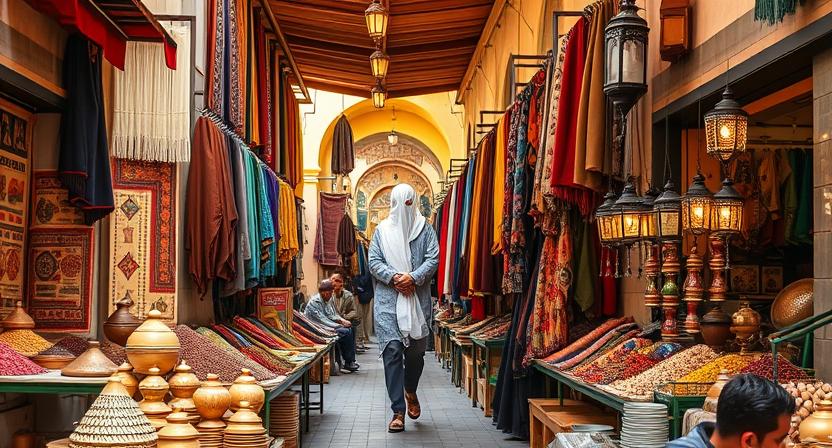
Targa: The Quiet Residential Cities of Marrakech
Located on the outskirts of Marrakech, Targa is a peaceful, suburban-like neighborhood. While it’s not a tourist hotspot, it represents the modern, everyday life of Marrakchis.
What Makes Targa Unique:
- Wide streets and gated communities.
- Quiet cafés, schools, and local parks.
- Ideal for long-term stays or expat living.
Targa reflects the evolving urban lifestyle of Marrakech beyond the bustling medina.
Bab Doukkala: The Artisan’s Corner
Bab Doukkala, situated near the medina’s northwestern gate, is rich with local character, especially known for its traditional craftsmanship and lively markets.
Highlights:
- Artisan workshops for wood carving, leather, and textiles.
- Local markets with authentic, non-touristy goods.
- Community feel with authentic Marrakchi rhythm.
It’s a great area to experience the traditional trades that still shape Marrakech today.
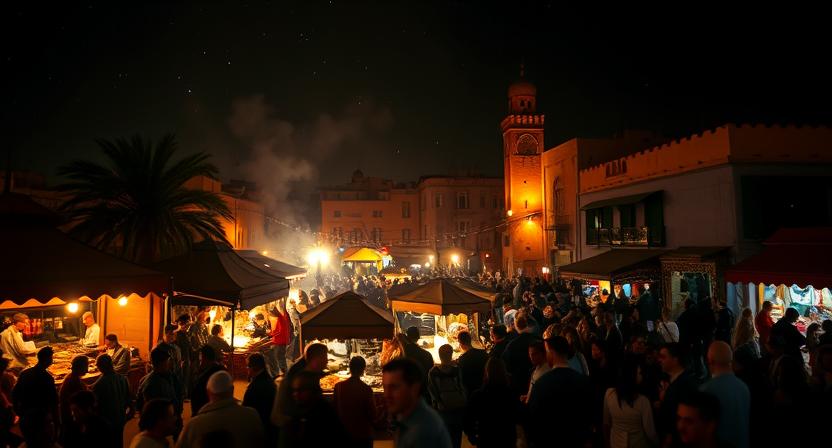
Sidi Youssef Ben Ali: A Historical District with Depth
Often overlooked, Sidi Youssef Ben Ali is one of the oldest districts in Marrakech, steeped in religious and social history.
Notable Features:
- Historic mosques and madrasas.
- A mix of traditional housing and new developments.
- Deep community roots and strong spiritual culture.
This district is best for travelers seeking a deeper connection to the spiritual and communal side of Marrakech.
Mhamid: Gateway to the Desert Spirit
Located on the southern edge of the city, Mhamid blends urban expansion with the ambiance of desert life.
What to See:
- Camel trekking excursions often launch from here.
- Dusty roads, earthy homes, and views of the desert plains.
- A taste of Saharan culture in an urban setting.
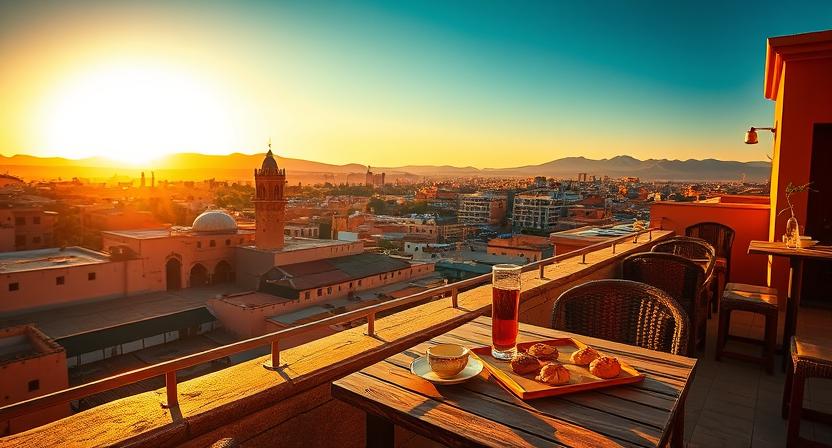
Mhamid serves as Marrakech’s bridge to the Atlas Mountains and the Sahara.
Daoudiate: The Cultural City for Locals
A centrally located area close to Gueliz, Daoudiate is a primarily residential district with a strong emphasis on education and local culture.
Points of Interest:
- Libraries and cultural centers.
- Local food spots serving authentic Marrakchi cuisine.
- Affordable markets, far from tourist prices.
Perfect for those wanting to live like a local during their stay.
Aïn Itti: The New Family-Oriented City
A growing district on the periphery, Aïn Itti offers clean, organized streets and a peaceful family vibe.
Why Visit or Stay in Aïn Itti:
- Affordable housing developments.
- New shopping complexes and schools.
- A quieter alternative to central Marrakech.
Hay Zitoune: The City of Scholars and Heritage
Often overshadowed by the central medina, Hay Zitoune (not to be confused with Riad Zitoun) is a quiet, heritage-rich area known for traditional schools and cultural institutions.
Key Points:
-
Home to old zawiyas (Islamic schools).
-
Rich oral history and community respect for learning.
-
Narrow streets that preserve centuries-old Moroccan architecture.
It’s an educational and cultural retreat nestled quietly in the broader city.
Hay Chrifia: The Family Retreat
Located near the airport and close to Agdal, Hay Chrifia is increasingly popular with middle-class families looking for security and comfort.
Why Visit or Stay:
-
Residential compounds and family-friendly parks.
-
Safe, calm environment — ideal for digital nomads or long stays.
-
Close proximity to shopping malls and transportation hubs.
It’s the Marrakech of the future — organized, peaceful, and green.
Hay Targa II: The City in Bloom
An extension of Targa, Targa II is known for new urban development, with wide roads, green spaces, and modern infrastructure.
Standout Features:
-
Tree-lined streets and new urban planning models.
-
Villas and apartment complexes with modern amenities.
-
Quiet yet accessible to the city’s main attractions.
Targa II reflects the vision of a more sustainable Marrakech.
Massira III: A Cultural Crossroads
As an extension of Hay Massira, Massira III blends traditional and contemporary lifestyles with increasing accessibility to schools, public spaces, and shopping areas.
Notable Elements:
-
Mixed-income housing, reflective of Marrakech’s diversity.
-
Cultural spaces used for local celebrations and events.
-
Rapid development of commercial centers.
Massira III shows how urban culture and tradition can thrive side by side.
Tassoultante: The Agricultural City
Located on the southern edge of Marrakech, Tassoultante is technically a rural commune but is becoming increasingly integrated into urban life.
What’s Interesting:
-
Surrounded by olive groves, farmland, and irrigation canals.
-
Ideal for ecotourism and agrotourism initiatives.
-
Traditional mud homes mixed with emerging villas.
Tassoultante offers a unique, agricultural flavor of the Marrakech region.
Hay Nahda: The City of the Working Class
Hay Nahda is one of the most populated neighborhoods in Marrakech, often referred to as a “city within the city” due to its size, density, and self-sufficient nature.
What Defines Hay Nahda:
-
Affordable housing and vibrant daily life.
-
Local souks, schools, sports centers, and cafés.
-
Rich street life filled with energy and purpose.
It represents the strength and community spirit of everyday Marrakchis.
Ouahat Sidi Brahim: The Gateway to the North
Located on the northern outskirts of Marrakech, Ouahat Sidi Brahim is growing in popularity for those seeking nature, space, and affordability.
Why It Matters:
-
Offers views of the Atlas foothills.
-
Quiet neighborhoods ideal for villa development.
-
Natural surroundings blended with suburban expansion.
Perfect for those seeking a balance between city life and rural calm.
Hay Azli: The Industrial Backbone
Hay Azli is Marrakech’s industrial quarter — not a tourist zone, but crucial to the city’s economic structure.
What Happens Here:
-
Warehouses, distribution centers, and manufacturing hubs.
-
Thousands employed in crafts, textiles, and construction.
-
Backbone of local production and trade.
Though overlooked, Hay Azli is an essential city within Marrakech’s infrastructure.
Tamansourt: The Planned Satellite City
Developed as a satellite town, Tamansourt lies just outside Marrakech but is increasingly connected through transit, investment, and expansion.
Features:
-
Designed with modern urban planning.
-
Wide boulevards, public parks, and government buildings.
-
Targeted at relieving congestion in central Marrakech.
Tamansourt is the future suburb — clean, modern, and growing fast.
The Digital City: Marrakech’s Innovation and Tech Zone
Though not an official neighborhood, the emerging digital and innovation sector in Marrakech is giving rise to co-working spaces, start-up hubs, and tech campuses — forming a conceptual “digital city.”
Why It’s Important:
-
Rise of digital nomads and tech entrepreneurs.
-
Co-working spaces like Marrakech Innovation Hub.
-
Integration of AI, green tech, and mobile apps in urban development.
This evolving “city” represents how Marrakech is not just preserving tradition, but embracing the future.
Final Reflection: The Soul of Marrakech Lies in Its Many Cities
From the historic medina to the digital innovation hub, the Cities of Marrakech tell a powerful story of evolution, diversity, and identity. Each neighborhood, district, and satellite zone contributes a chapter to the tale — whether it’s tradition, luxury, agriculture, or technology.
Exploring Marrakech isn’t just about monuments or marketplaces — it’s about understanding its layers. Each “city” within this city offers its own mood, mission, and memory.
So next time you visit Marrakech, don’t stop at the obvious. Step into its many worlds — and discover the cities of Marrakech.
This is the face of new urban planning in Marrakech.
Sidi Abbad: A Mix of Past and Progress
Once a small outlying area, Sidi Abbad is now an expanding zone with a mix of traditional homes and new construction.
Unique Aspects:
- Old ksars and farmhouses now coexisting with villas.
- Small mosques and old wells reflecting historical roots.
- Expansion of infrastructure and community parks.
Sidi Abbad bridges the rural and urban dimensions of the city.
Hay Sadri: The Workers’ City
Hay Sadri is a densely populated, working-class area that embodies the day-to-day life of thousands of Marrakchis.
Why It Matters:
- Strong sense of community and resilience.
- Local cafés, markets, and schools that show real Marrakchi life.
- Close to industrial zones and small manufacturing shops.
It might not be glamorous, but Hay Sadri is vital to understanding Marrakech’s social and economic dynamics.
Riad Zitoun: The Boutique City Inside the Medina
A charming part of the old medina, Riad Zitoun is filled with boutique riads, traditional hammams, and fine-dining restaurants.
What to Explore:
- Luxury riads that blend tradition with comfort.
- Hidden courtyards, often with fountains and orange trees.
- Direct access to Bahia Palace and Dar Si Said Museum.
Riad Zitoun feels like a curated Marrakech in miniature.
Douar Lahna: A Rural Pocket Within the City
Douar Lahna is one of the rural pockets that have been integrated into greater Marrakech, offering a slower pace and agricultural charm.
Notable Features:
- Fields and small farms amid the cityscape.
- Traditional mud-brick homes and communal wells.
- Home to weekly souks and small local festivals.
It’s a reminder that Marrakech’s roots are deeply tied to the land.
Hay El Massira: The Expanding City
Situated in the southwest, Hay El Massira is a rapidly growing residential zone for Marrakchis seeking affordable housing.
Key Elements:
- Numerous apartment complexes and schools.
- Small businesses, gyms, and new cafés.
- Public transport connectivity to the medina and Gueliz.
This area showcases the demographic growth and urban sprawl of modern Marrakech.
Hay Mohammadi: The Heart of Urban Youth
Known for its youthful energy and affordable living, Hay Mohammadi is a favorite among students, young professionals, and local creatives.
Urban Vibe:
- Affordable rentals and fast-growing amenities.
- Street culture, graffiti, and indie cafés.
- Mix of traditional and new-build architecture.
Hay Mohammadi represents the voice of Marrakech’s
Hay Al Qaria Assiyahia: The Spiritual City
Tucked away in the southern part of Marrakech, Al Qaria Assiyahia is a spiritual and residential neighborhood that revolves around traditional values and Islamic teachings.
Highlights:
-
Religious schools (madrasas) and small mosques throughout the area.
-
Quiet streets, family-oriented lifestyle, and deep community bonds.
-
Frequent hosting of Qur’anic recitation events and spiritual gatherings.
A perfect example of how spirituality is rooted in the everyday life of many Marrakchis.
Sidi Zouine: The City of Quranic Studies
Located just outside the main urban sprawl, Sidi Zouine is widely known across Morocco for its Islamic institutes and scholarly heritage.
Key Elements:
-
Home to one of the most prestigious Qur’anic schools in the region.
-
A peaceful village-like atmosphere surrounded by olive groves.
-
Draws students and scholars from across the country.
Sidi Zouine represents the scholarly soul of Marrakech and its spiritual legacy.
Hay Al Farah: The City of Celebration
Hay Al Farah (literally, “Neighborhood of Joy”) is a densely populated, joyful, and spirited area in Marrakech known for its vibrant social life and strong youth culture.
What Makes It Unique:
-
Colorful street art, youth sports centers, and music gatherings.
-
Popular with working-class families and students.
-
Frequent community events that showcase local talent.
This district bursts with life and represents the city’s youthful heartbeat.
Azzouzia: The Frontier City
Located on the western fringe of Marrakech, Azzouzia is a fast-developing area that was once rural but is now urbanizing rapidly.
Features:
-
Expansion of infrastructure, road networks, and housing projects.
-
Mix of farmland and construction zones, giving it a transitional feel.
-
Seen as a growth corridor toward Tamansourt and beyond.
Azzouzia is where the edge of Marrakech meets its expanding future.
Bab Ighli: The Gateway to Culture and Conferences
Bab Ighli has recently gained prominence as the site of major cultural and international events, including the UN Climate Conference COP22.
Attractions:
-
Palais des Congrès and international event spaces.
-
Proximity to Royal Palace and Agdal Gardens.
-
Frequent site for diplomatic, cultural, and global events.
It’s the political and cultural showcase zone of Marrakech.
Hay Al Inara: The Middle-Class City in Motion
A balanced neighborhood located between the historic and modern sides of the city, Hay Al Inara is home to growing middle-class families and young professionals.
Key Aspects:
-
Well-organized streets and new housing complexes.
-
Local cafés, bakeries, and independent stores.
-
Popular with young married couples and professionals.
Al Inara exemplifies the comfortable middle ground between tradition and modern urban life.
Menara District: The Symbolic Green City
Often associated with the famous Menara Gardens, the Menara District is both a symbolic and functional space in Marrakech.
Highlights:
-
Home to the Menara Airport, connecting Marrakech to the world.
-
The Menara Gardens, a historical olive grove and reflecting pool.
-
Government buildings, green belts, and growing residential zones.
This district reflects the balance between connectivity, ecology, and heritage.
Looking Ahead: Marrakech Never Stops Evolving
From heritage-rich zones like Sidi Zouine to contemporary centers like Bab Ighli, the Cities of Marrakech continue to expand in meaning, diversity, and scope. Every neighborhood — new or old, spiritual or modern, industrial or artistic — contributes to the ever-unfolding story of this vibrant Moroccan metropolis
youth and future.

